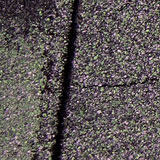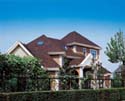The early morning air was crisp as Merriweather Roofing Co. workers arrived at the job site—a small, commercial building with a low-slope roof that required torched application. Frank, the company's foreman, had been with Merriweather Roofing for six years and participated in many safety programs. As the workers unloaded the trucks, Frank inspected the roof, checking for potential hazards, such as soft spots and penetrations. He recognized various fall hazards and discussed them with the crew.
The workers immediately set up a warning-line system on all sides of the roof, ensuring the warning line was positioned 6 feet from the roof's edge. They also made sure the warning line was flagged every 6 feet.
Frank assigned a safety monitor to keep his eyes on workers who were required to work outside the warning line. Because the building was two stories high, a fall could be fatal. Frank also made sure there were at least two 20-pound, ABC-rated fire extinguishers within 10 feet of torching activity.
As the crew finished loading the roof, one worker, Manuel, picked up a torch, lit it and turned toward the area in which he planned to work. Suddenly, he slipped, dropping the lit torch. Before anyone could react, the intense flame hit the leg of a co-worker, Jack, who cried out in agony and crumpled to the roof surface.
Frank sprang into action, took his coat and smothered the flame on Jack's leg. Frank soaked the burned area with cold water from a cooler. He grabbed the first-aid kit and applied a sterile dressing on the burn. He didn't apply any ointments or salves because he knew they could keep the burned area from cooling.
Frank called 911 and requested emergency medical assistance. He then called Jim Merriweather, the roofing company's owner, and told him about Jack's injury. As the other crew members attended to Jack, Frank approached Manuel. Manuel was uninjured and explained to Frank he had slipped on a frosty patch on the roof surface.
The ambulance arrived a few minutes later, and Jack was taken to the emergency room. Frank and the others checked the roof to ensure no flames had spread.
Jim arrived soon after, and as the crew returned to work, he spoke with Frank about the accident. Frank told him a worker had slipped on some frost while carrying a lit torch and caused the injury. Jim inspected the roof and saw residue of the early morning frost.
Jim then drove to the hospital to check on Jack. He had suffered a severe burn to the side of his leg but because of Frank's quick thinking, there was no permanent damage. Jack would miss about one week of work.
Jim, who was a member of a roofing trade association, called the association's safety director later that day and told him about the accident. The safety director then guided him through a series of steps to help prevent dangerous missteps on a roof.
The next day, Jim called a safety meeting to address slips on a roof, particularly ones caused by frost and dew. Recapping the previous day's incident, he realized that though the crew had inspected the job site for fall hazards, no one had thought to check the roof surface for potential slip hazards.
From now on, each worker would have to carefully examine where he walked and consider the condition of the roof surface. To help combat the risks of walking and working on slippery surfaces, Jim told the workers to take small steps, which would help them keep their balance. He advised them to keep their hands free when possible and wear appropriate shoes for the work surface. Work boots with hard rubber soles are best for concrete or wood surfaces. Boots with soft rubber soles work best on most dry surfaces.
Jim also told them the condition of the soles can play an important role. For example, the soles of Manuel's work boots were worn down and covered with old asphalt. Soles that collect asphalt and debris from repeated exposure to roofing work lose their ability to grip surfaces. When it comes to safety, Jim explained, even little details can be critical. And work boot soles caked with debris also can damage newly installed roof surfaces. Jim told them to keep their boots in good condition and replace them when necessary.
Manuel and Jack had been fortunate, Jim said, because the torch could have caused far more damage. Fall was going to be filled with plenty of crisp mornings, and the workers were going to have be more careful of frost and dew on roof surfaces. Jim was determined there would be no more dangerous slip-ups.
Peter Greenbaum is NRCA's director of education and training media.


